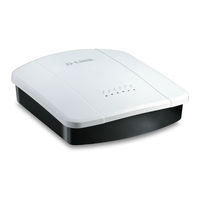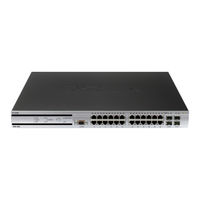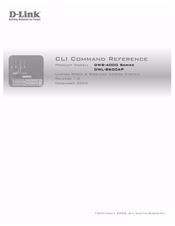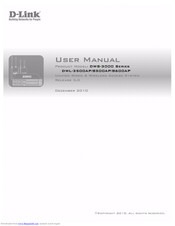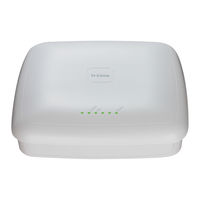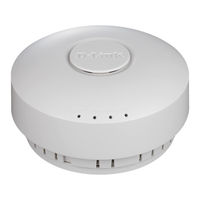D-Link DWL-8600AP Manuals
Manuals and User Guides for D-Link DWL-8600AP. We have 9 D-Link DWL-8600AP manuals available for free PDF download: User Manual, Cli Command Reference, Administrator's Manual, Reference Manual, Installation Manual
Advertisement
D-Link DWL-8600AP User Manual (576 pages)
DWS-4000 Series Unified Wired & Wireless Access System
Brand: D-Link
|
Category: IP Access Controllers
|
Size: 22 MB
Table of Contents
D-Link DWL-8600AP Cli Command Reference (566 pages)
Brand: D-Link
|
Category: Wireless Access Point
|
Size: 5 MB
Table of Contents
Advertisement
D-Link DWL-8600AP User Manual (266 pages)
Unified Wired & Wireless Access System
Brand: D-Link
|
Category: Wireless Access Point
|
Size: 8 MB
Table of Contents
D-Link DWL-8600AP Administrator's Manual (183 pages)
Unified Wired & Wireless Access System
Brand: D-Link
|
Category: Wireless Access Point
|
Size: 6 MB
Table of Contents
D-Link DWL-8600AP Administrator's Manual (130 pages)
unified
Brand: D-Link
|
Category: Wireless Access Point
|
Size: 6 MB
Table of Contents
D-Link DWL-8600AP Administrator's Manual (135 pages)
Unified Access Point (AP)
Brand: D-Link
|
Category: Wireless Access Point
|
Size: 4 MB
Table of Contents
D-Link DWL-8600AP Reference Manual (36 pages)
Unified Wired & Wireless Access System
Brand: D-Link
|
Category: Wireless Access Point
|
Size: 0 MB
Table of Contents
D-Link DWL-8600AP Installation Manual (12 pages)
Unified Concurrent Dual Band Access Point
Brand: D-Link
|
Category: Wireless Access Point
|
Size: 0 MB
Table of Contents
Advertisement
